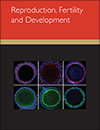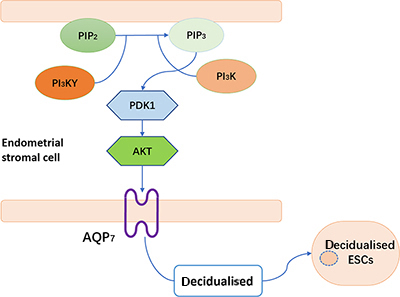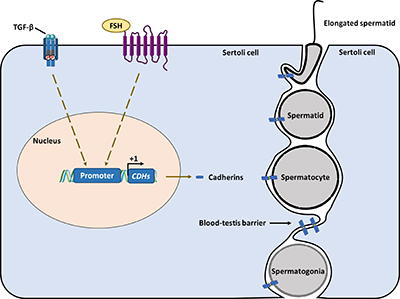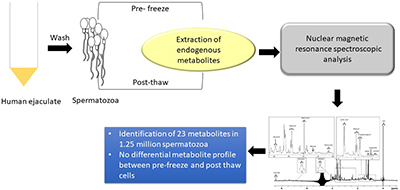Endometrial decidualisation plays an important role in embryo implantation and the successful establishment and maintenance of pregnancy. Our present results showed the expression of AQP7 was upregulated though PI3K-Akt pathway activation, which might promote proliferation and differentiation of the ESCs, thus affecting occurrence of decidualisation. This study explores the mechanisms that influence decidualisation. Moreover, this might provide a new biomarker for the diagnosis of infertility and a new drug target for the prevention and treatment of infertility. Image supplied by Min Liu.

Reproduction, Fertility and Development
Volume 35 Numbers 13 & 14 2023
Sertoli cells are nursing cells that can form the blood–testis barrier (BTB) and support the development of germ cells in the testis through their interaction with germ cells. Cadherins are an important component of the junctions between Sertoli–Sertoli cells and Sertoli–germ cells and are crucial for testicular tissue establishment and the restructuring of the BTB. The expression of cadherins can be regulated at the transcriptional level by the FSH and TGF-β signalling pathways in Sertoli cells. Image by Ha Tuyen Nguyen.
RD22246Use of sensitivity-enhanced nuclear magnetic resonance spectroscopy equipped with a 1.7-mm cryogenically cooled micro-coil probe in identifying human sperm intracellular metabolites
 , Ameya Jijo, R. Vani Lakshmi, G. A. Nagana Gowda, Guruprasad Kalthur
, Ameya Jijo, R. Vani Lakshmi, G. A. Nagana Gowda, Guruprasad Kalthur  and Satish Kumar Adiga
and Satish Kumar Adiga 
Due to the technical complexity of identifying intracellular metabolites in human spermatozoa, the association of these metabolites with fertility is unknown. For the first time, 800 MHz NMR equipped with a 1.7-mm cryo-probe was used to detect endogenous intracellular metabolites in processed human sperm cells. This approach successfully identified 23 metabolites from only 1.25 million sperm cells. Hence, NMR spectroscopy is a potential tool for identifying intracellular metabolites when sperm number is low.






